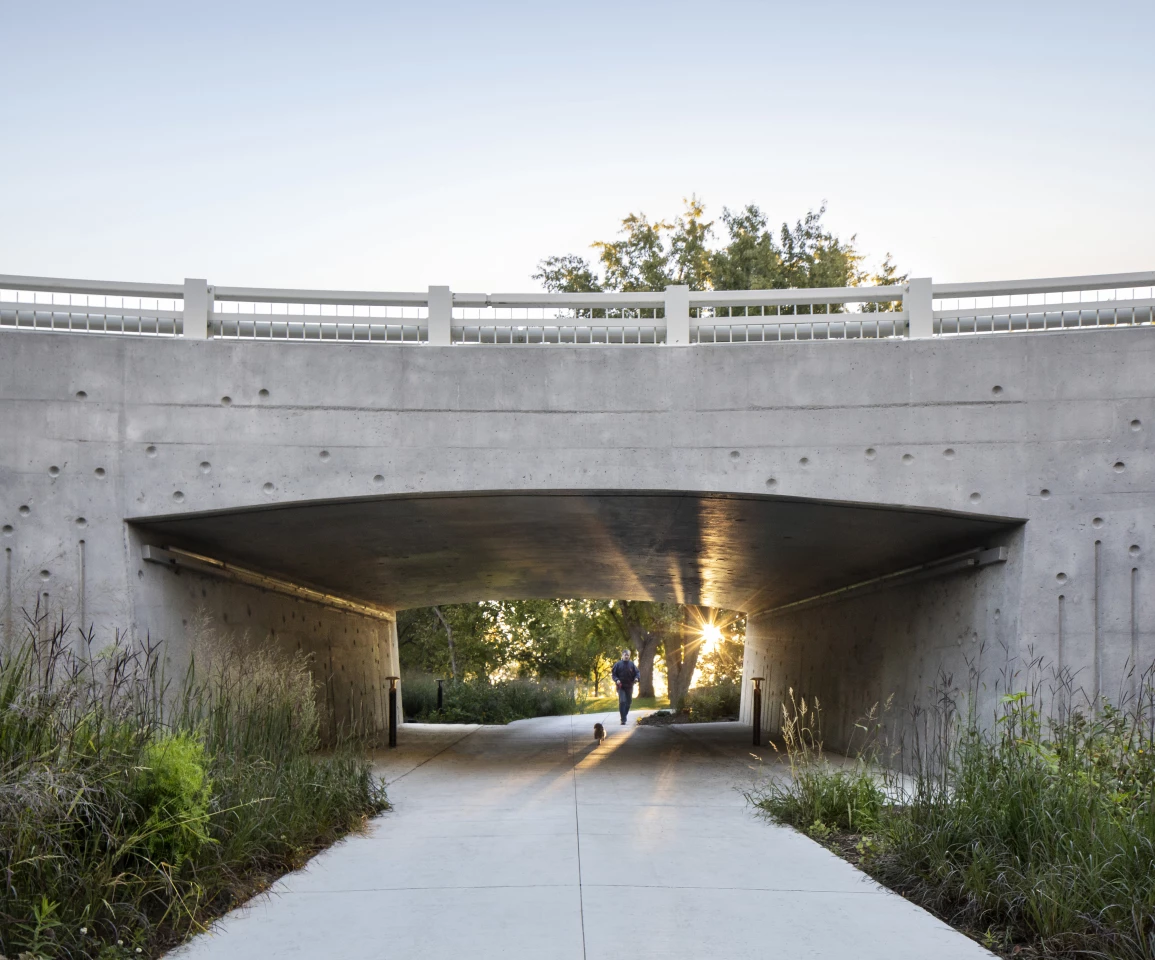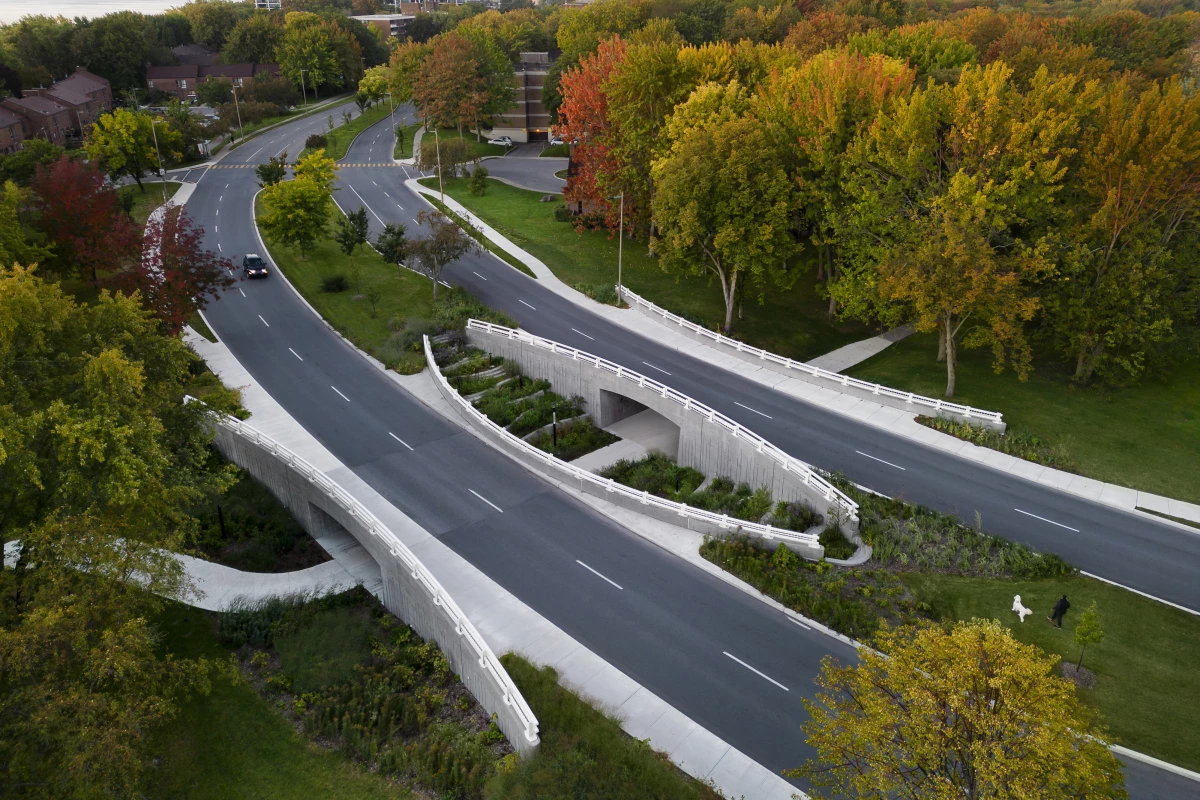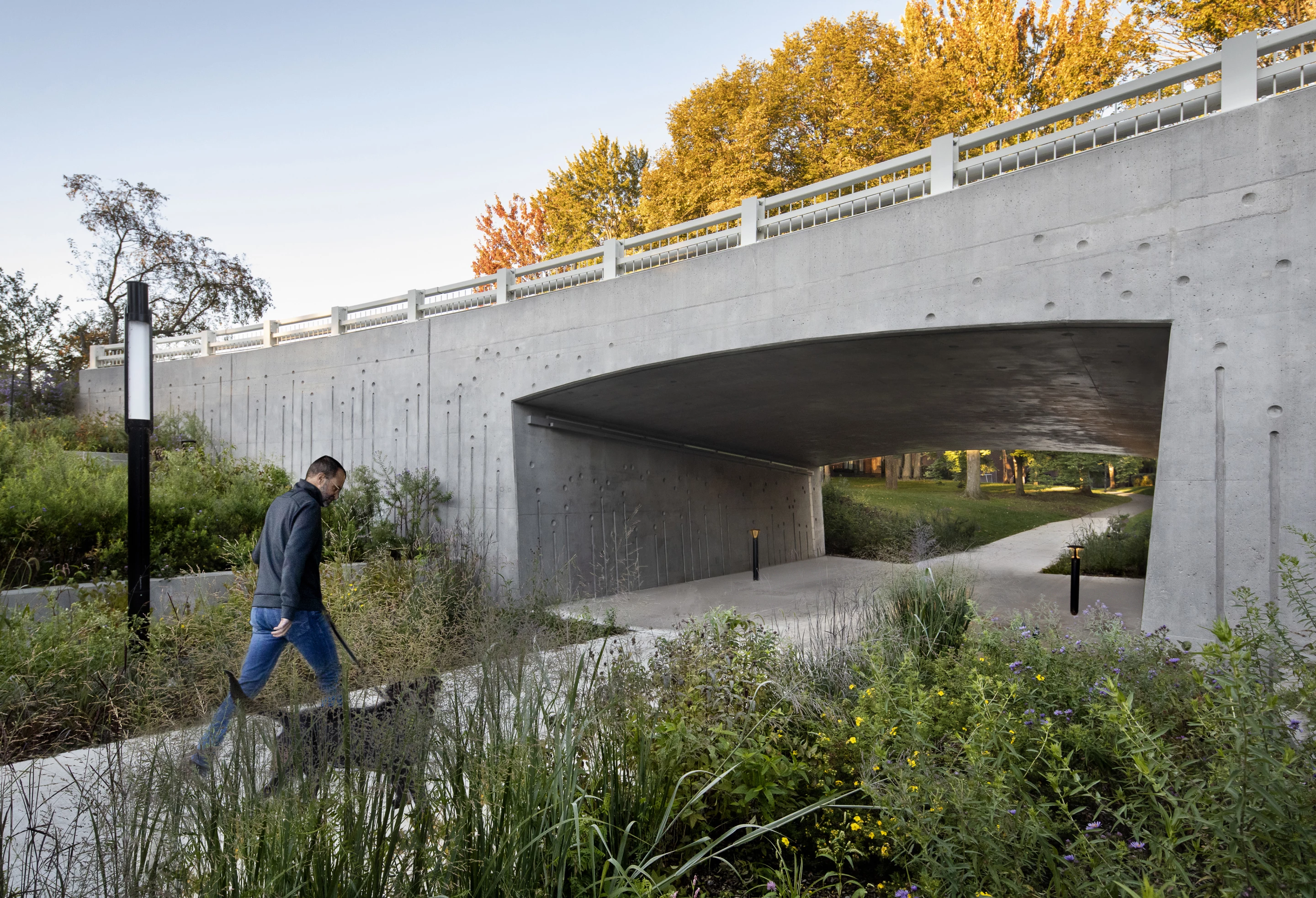Production of the cement used in concrete is a major cause of CO2 emissions worldwide, so Provencher Roy architects used a greener alternative for a pair of bridges in Canada. The bridges were built from concrete that incorporated locally sourced recycled glass, reducing its greenhouse gas footprint significantly.
The Darwin Bridges are located on Nuns' Island in Montreal, and replaced a pair of bridges that had been used for almost 60 years. Their sidewalks were inadequately narrow and the passage under the crossings was starting to collect puddles of water.
The new bridges were built using cast-in-place concrete, which utilized a mixture of 10% finely ground recycled glass as a binder to replace the cement. Provencher Roy says it reduced greenhouse gas emissions by an impressive 40 tonnes (44 US tons). However, it's worth noting that there are other teams using glass to make greener concrete, including the Nanyang Technological University and Deakin University – so this is not a totally new idea, but a new application of it.
"This ground-breaking project builds upon 17 years of research on the integration of ground glass into civic infrastructures, in collaboration with the Université de Sherbrooke and Ville de Montréal," stated Provencher Roy. "A world premiere, this 100% Québécois patented GGP [ground-glass pozzolans] invention was added as a ternary binder, enabling the project to make a direct environmental impact by reducing greenhouse gas emissions. The GGP used replaced the cement typically used, constituting 40,000 kilograms [88,185 lb] of locally recycled glass and representing 70,000 wine bottles."

The gently curving new bridges – each of which spans a length of 37 m (121 ft) – are a major improvement over their predecessors. They boast improved safety and accessibility for pedestrians and cyclists, with new LED lighting and wider walkways. Additionally, a new lush greenery-filled area was added to enliven the exposed concrete.
The new Darwin Bridges have been in use for a while now, but only recently officially opened. All being well, they're expected to remain in operation for over 125 years.
Source: Provencher Roy









